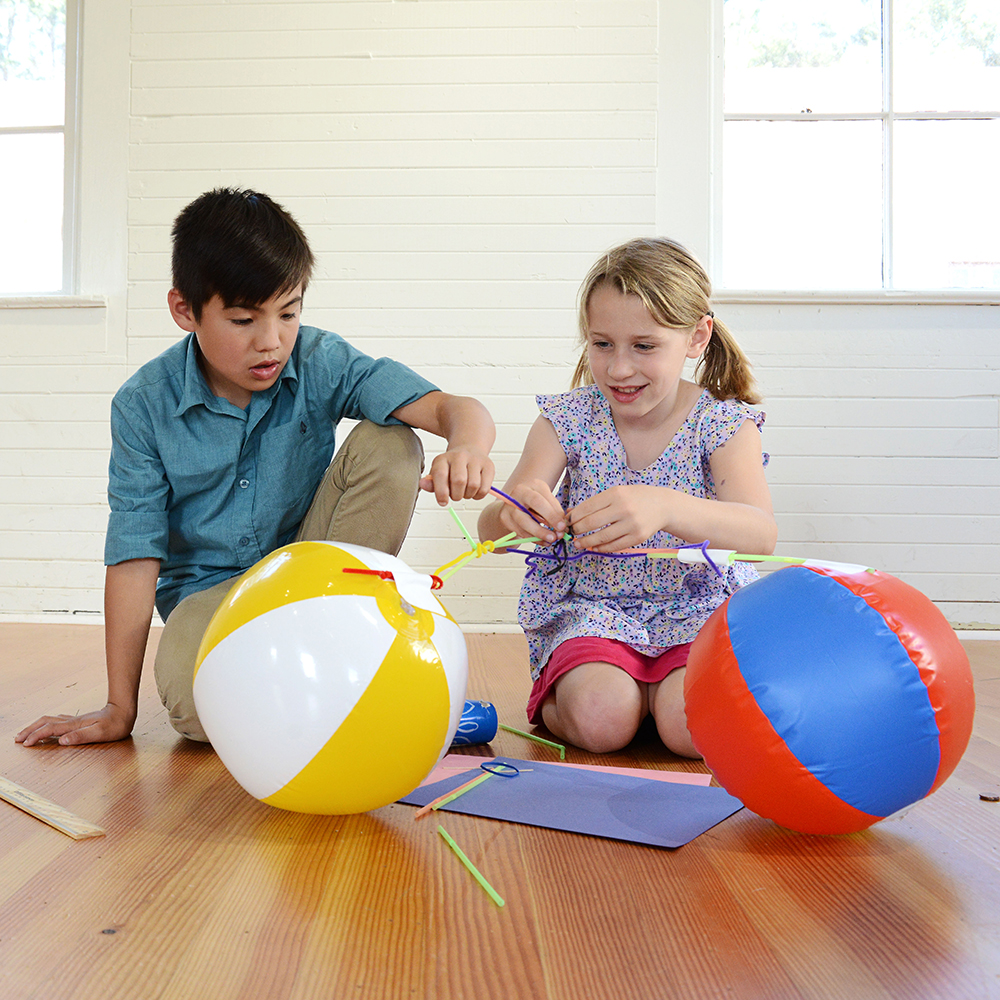Build a bridge between two beach balls using household items. The challenge is to build the longest bridge possible that can support the weight of a box of paper clips. In this group activity, children use their imagination and creative thinking skills to problem solve as they construct and build a bridge.
Materials Required
- 2 coffee cups
- 3 small rubber bands
- 2 beach balls
- 5 pipe cleaners
- 10 straws
- 1 ruler or yardstick (for measuring only)
- 1 box of paper clips
- 2 pieces of paper
- 1 “s” hook
- 10 toothpicks
- 3 mailing labels
- 1 timer
Instructions
- Start by assessing the household items that are available. Brainstorm ways to construct the bridge with these materials for three minutes. When working as a group, brainstorm silently for one minute and then share ideas for the remaining two minutes. Give everyone a chance to share.
- Set a timer for two minutes. Build a bridge between the two beach balls using the household items. Try to create the widest span possible that will still be able to support the weight of a box of paper clips in the middle of the bridge.
- When time is up, measure the length of the bridge using the ruler or yardstick. How wide is it?
- After the length of the bridge has been measured, test its structural endurance by placing a box of paper clips in the middle of the bridge. Does the bridge support the weight?
- If the original bridge did not support the weight of the box of paper clips, try building another bridge using the materials in new ways.
Additional Tips
Try these add-on activities:
- If the original bridge did support the weight of the box of paper clips, try adding additional weight. What other items can the bridge support? What is the heaviest item the bridge can support?
- Build a bridge between different types of anchors. Is it possible to build a bridge between two couches or two kitchen counters? What else could be used? Be creative and find other anchors to build between.





